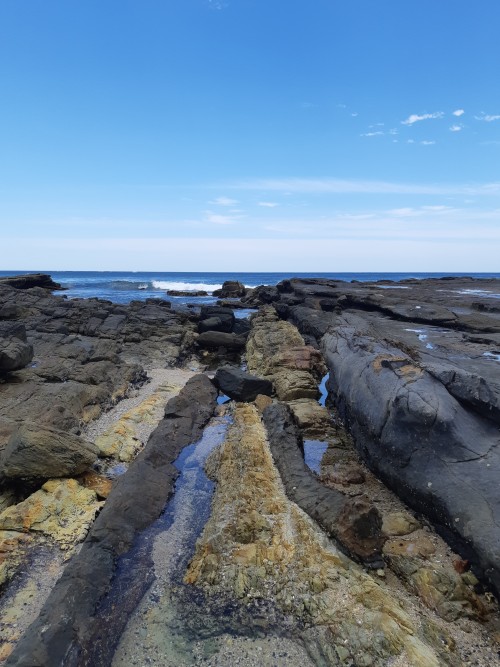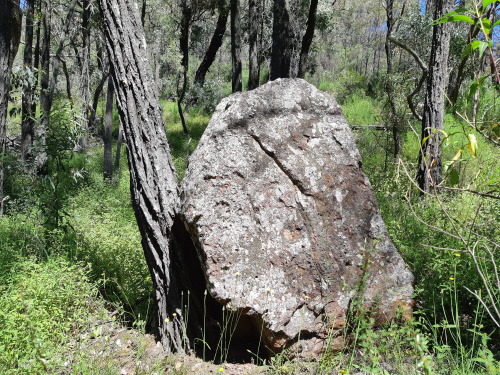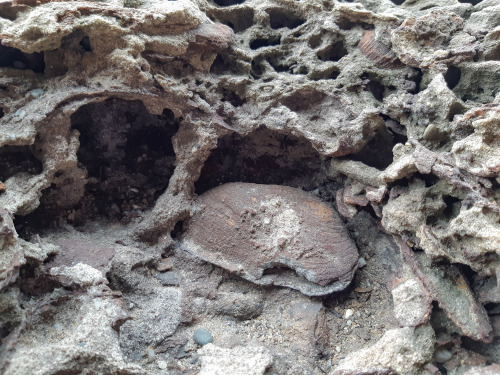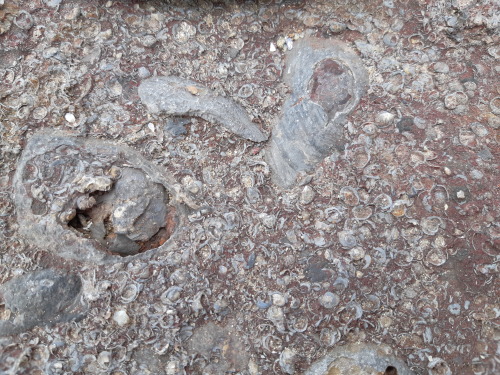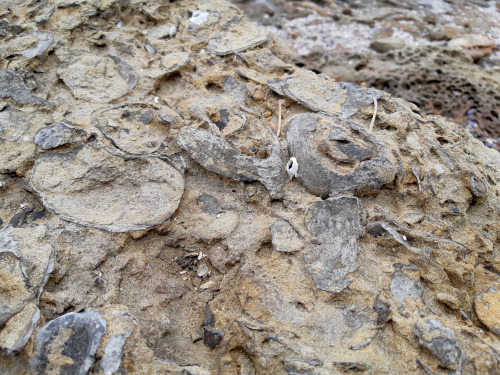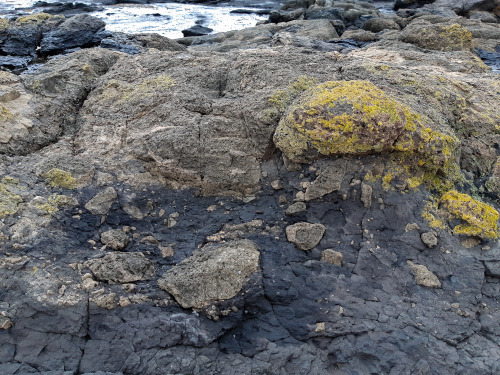#earth science

Today is the day to celebrate our beautiful planet, and to emphasize how important it is to care for it.
Today, a record number of countries are meeting in New York City to sign the historic Paris Agreement on climate change!
Aswe are witnessing the slow dying of the biggest living entity on our planet, the Great Barrier Reef, it is time to take action.
- 10 things you can do to save the oceans-this includes reducing your carbon footprint, using less plastic, make sustainable seafood choices, and spread the word!
- The lazy person’s guide to saving the world -Things you can do from your couch, at home, or outside your house!
And to end on a positive note, here is a piece on why we are not as doomed as we think.
Let’s start looking after our planet.
The study of natural history is the study of how the world has changed but Earth itself is in a constant state of flux – because the ground beneath your feet is always moving.
So if we want to know how we got here, we have to understand how “here” got here. New from Eons!
Yeah, so you know what’s weird? Earth’s face.
It’s a pretty face and everything, but it’s changed A LOT over the past few billion years. More than we knew even a few years ago.
Check this out, and you’ll see what I mean!
We are so excited to unveil the latest season of Breakthrough, a short film anthology from Science Friday and Howard Hughes Medical Institute (HHMI) that follows women working at the forefront of their fields. Breakthrough hopes to inspire a future generation of women to lead careers in STEM. New episodes drop weekly OR catch the entire series now on Alamo On Demand.
Learn more at BreakthroughFilms.org. If you are an educator or career counselor, don’t forget to check out the Breakthrough Inclusive Action Tool Kit.
Hey guys! I don’t usually talk about very serious subjects happening around the world at the current moment, but all this news about climate change permanently affecting the planet is creating alot of anxiety around the world at the moment. I’m sure alot of you guys have given up and don’t care anymore, which I do not blame you as I feel the same way. But, with a little bit of motivation I’m sure we can help aid the climate change problem by adding little changes to our everyday schedule.
Below are some recommendations to help slow down climate change:
- Unplug electrical devices when not used
- Grow trees/oxygen releasing plants (heavily recommend this website for plant recommendations:
https://www.india.com/video-gallery/top-5-oxygen-producing-indoor-plants-covid-19-4661671/
- Turn off mobile devices when not in use
- Use less gas releasing transport (use bicycle, walk, ext.)
- Eat more naturally grown foods - vegetables, fruit, ext. (You can grow your own, which I can assure you is very interesting as well as money saving. By doing this you spend less money on food miles and less electricity is used on factories.)
- Shop locally if you are able to. This can help cut carbon emissions and air pollution as well as cut food miles. By making cleaner air we can also make fresher crops.
- Throw away less food. Use the food that you buy when you can and compost it. This can help stop methane gas from entering the air.
If you are interested in learning more ways to help aid climate change then you can use the website below:
Thank you for reading and please spread information to those who are interested. Please take care of yourself during these times!
Dykes and landscapes
Dykes most frequently occur as igneous rocks which once were liquid magma that intruded older rocks. Dykes form as sub-vertical to vertical linear sheet-like features and can be millimetres to kilometres wide.
Dykes can contribute to formation of interesting landscape features. For example, in above photograph, the dyke was more resistant to weathering and erosion than the rock it intruded, and so, it gave rise to a tall protruding wall known as the Breadknife, the Warrumbungle National Park. Whereas, in the photograph below, the dyke is less resistant to weathering and erosion, and so erosion of the dyke resulted in formation of a slot or a gully in the cliff near Kiama, south coast NSW.
Erosion of surface features (such as rocks) at different rates is referred to as differential erosion.
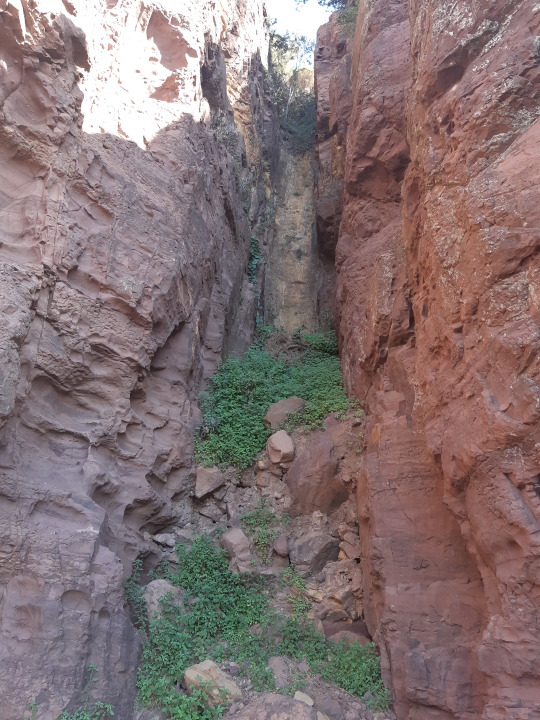
Post link
Feeding patterns
These swirly patterns were made by living organisms at the bottom of the sea approximately 250 million years ago while they were feeding on an organic matter mixed within the sediment. The pictured sediments were buried by more sediments, hardened and eventually brought to the surface by tectonic processes without messing up such signs of ancient life.
South coast NSW, Australia
Post link
The dark coloured rock is a sedimentary rock and the bright coloured rock is an igneous rock (used to be a magma) which intruded the sedimentary rock. This intrusive igneous rock is called dyke or dike.
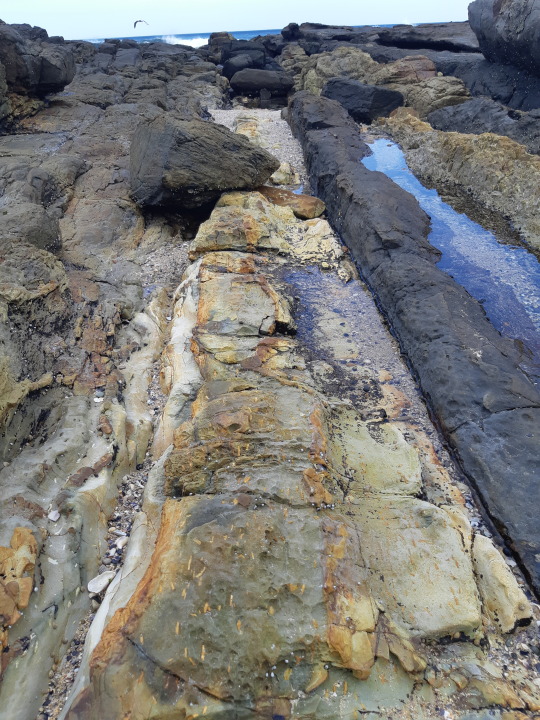
This dyke is bright coloured because the minerals that make up this rocks are breaking down to clays due to exposure to water and oxygen. Original minerals in rocks such as this one are usually black and so dykes often appear dark (but, definitely not a rule!). However, when these minerals breakdown they produce clay minerals, which are usually bright coloured.

The white-orange marks that you can see on the close-up image of the dyke used to be minerals that floated in the magma before it turned into a igneous rock. These minerals were called plagioclase, however, now these too have been converted into clays.
You might notice that approximately all these tabular minerals are aligned in one up-down direction. This the tell-tale sign of magma movement which aligned the mineral according to its flow direction. From this photograph you can narrow down the magma movement direction options to either to up-down and towards-you/away-from-you.
Southcoast NSW, Australia
Post link
Eroded volcanic landscape. Approximately 15 million years ago this used to be a shield volcano (similar in structure to Hawai’i), but since its volcanism stopped the erosion has exposed the sides of the volcano. The most pronounced features are an ancient magma chambers. These would either feed magma to eruptions occurring on the surface or pulses of magma that did not make it to the top and have slowly crystallized at depth.
Warrumbungle National Park, Australia
Post link
Broken shells
As you would find some broken-up shells on the beach today, these are just a few pieces of ancient sea shells from about 300 to 250 million years ago, preserved in the rocks which used to be a sea bottom sediment.
Ulladulla, Australia
Post link
Rocks out of place
Why are these rocks out of place? They just do not fit the environment in which they are. The sea waves that moved the medium to coarse sand that is now the sandstone that surrounds these boulders, are not strong enough to move boulders. There is a huge contrast in mass between the sand and the boulder. So, the only explanation is they were placed here by some other means. For this reason, such rocks are called ‘dropstones’, as they were dropped/placed into their current position, rather than being transported along with the surrounding sediment.
One explanation how this could have happened, is the sea ice. During Permian (~300-250 million years ago) this region was under ice age conditions, with glaciers covering the continent from land to sea. So, whether it was glaciers sliding into the sea, or sea ice enveloping loose boulders around the coast and moving them off into the sea; it is impossible to say exactly. But, because ice floats on water, it provides a good candidate for a mechanism of moving these heavy boulders from the land to the sea bypassing the sea wave transport.
Ulladulla, Australia
Post link
When rock and paper end up with the TIE…
Rockfalls occur when rocks in the cliff face or a steep slope are destabilized and fall due to gravity pull. This can range from few rocks rolling down the hill to a massive rock avalanche that destroys the village. Either way, such moving rocks or a boulders can pick up speed and move with a lot of force, this can be damaging to anything that gets in their way. Bigger rockfalls can completely strip surface vegetation, knock down and uproot trees, damage soil and initiate erosion etc.
Surprisingly, this tree was strong enough to withstand the impact of this multi-tonne boulder rolling down.
Warrumbungles National Park, Australia
Post link
Do not be fooled by this incredibly well preserved shell, it is not a recent shell, but a 250 million year old fossil.
Many different mollusc fossils are very well preserved at this outcrop which consists of layer upon layer of sediment which slowly accumulated on the sea floor during Permian times. Organisms such as this one, would have thrived here, feeding on the organic matter settling down to the bottom of the sea.
Southcoast NSW, Australia
Post link
This wall-like feature is a left over from a plumbing system of an ancient volcano and is called a dykeordike. When this volcano was active, this dyke would have served as a duct through which magma was transport to feed the surface lava eruption, or alternatively it could have been an off-shoot from the magma chamber that froze up within a body of a volcano.
Now, ~15 million years later the erosion has removed much of this volcano and so its internal magma plumbing system is nicely exposed and is dominated hard crystalline rocks which are much harder to erode. Thanks to this contrast in erosion we have a beautiful landscape of the Warrumbungle National Park.
Post link
In the mountains you can get a lot of two things, rocks and sediments produced from the break down of those rocks. In the foreground and in the background around the feet of the mountains you can see two big piles. These are called alluvial fans. It is basically a dump of sediments that was flushed down the small valleys into a big valley. What runs between these two alluvial fans is a major river which is a conveyor belt of the sediment that slowly moves it down the valley, down the mountains, down the floodplains and eventually into the ocean.
See it as a highway for moving of sediment.
Nubra River, Himalaya.
Post link
Giants among the Lilliputians, some diversity in size of bivalves among the sea bottom dwellers from Permian times (~250 million years ago).
Example from south coast NSW, Australia.
Post link
This post is dedicated to YOU!
I am very happy to let you guys know that this is the 200th post on the Dr Rock Club blog. So with this post I wanted to say ‘Thank you’ to all of you for your support!
Let’s celebrate this special occasion with a layer CAKE stratigraphy!
Scene from along Australia’s south coast
Post link
Ancient sea bottom exposed along a modern seaside rocky platform. This immense amount of fossilized shells is preserved in ~250 million year old sea sediments which would have been a feeding grounds for all these bivalves.
South coast, NSW, Australia.
Post link
Every rock that crops out of the ground is a record of the past, and so, in one way or the other it tells something about the environment in which it was formed. For example, the dark grey rock with fine and smooth texture you can see on the photo, looks that way because it formed on deep water sea bottom, where waves did not disturb the sediment that make up this rock, nor coarser sandy material was brought into it. This was a clam environment which allowed the sea-bottom animals to feed on the organic matter within the sediment (hence the dark colour) and is the reason why there are so many fossils in it, which I showed in the ‘underwater lilies’ post.
So, it is all good, and all makes sense!
But, then there are those large pieces of light grey rock (not shown, but some bigger than sedan car) with rough texture and little holes. Like you can see, its pieces are larger than anything else in a vicinity and are scattered all throughout the dark grey rock. This light grey rock does not belong to the sedimentary environment it is in, it got to where it is by other means than the sediment that surrounds it. And so, the plot thickens…
South coast NSW, Australia
Post link
Fossilized bivalve shells buried in an ancient sea sediments are receiving daylight for the first time in ~250 million years. These sediments are rich in iron minerals, which has replaced the carbonate shell material and preserved the original texture of the shell. Thank you iron oxides for preserving the growth layering of this shell for us to admire.
Beach-side outcrop in southeastern Australia.
Post link




